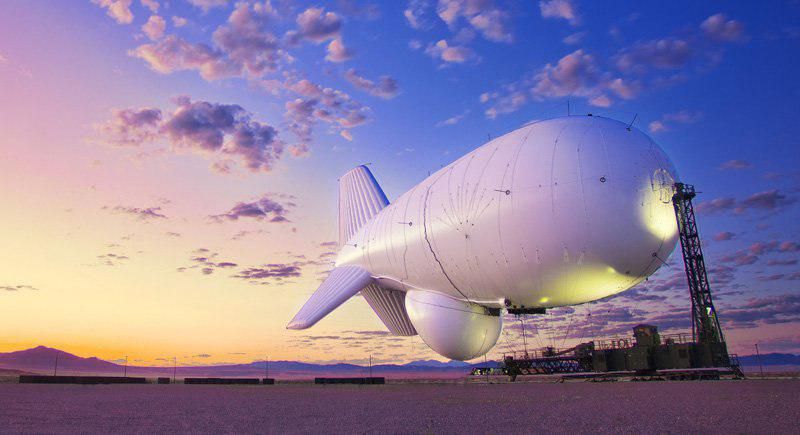An aerostat system uses lighter-than-air gas-filled balloons called aerostats that are tethered to the ground with cables or winches. Aerostats carry payloads of sensors and communication systems high into the atmosphere to perform tasks such as aerial observation and surveillance. While manned aircrafts have traditionally fulfilled such aerial observation roles, aerostat systems offer some key advantages over aircrafts.
History and Evolution of Aerostat Systems
The use of aerostats for military purposes can be traced back to the American Civil War in the 1860s when both Union and Confederate forces employed tethered balloons for aerial observation. During World Wars I and II, aerostats were extensively used for aerial reconnaissance, coastal patrol, and artillery spotting. After the Cold War era, aerostat systems found new applications in border surveillance and monitoring oil pipelines. Technological advancements have enabled the development of more advanced unmanned aerostat systems over the past few decades. Today’s aerostats are equipped with capable payloads such as high-resolution visible-light and infrared cameras, radars, signals intelligence systems and satellite communication antennas.
Advantages Over Manned Aircrafts
Some of the primary advantages of Aerostats System over conventional manned aircrafts for aerial surveillance roles include:
– Persistence: Aerostats can stay airborne for extended periods ranging from a few days to even months depending on payload and weather conditions, offering continuous coverage for days at a time. Manned aircrafts require refueling and crew changes which limit their endurance.
– Cost-Effectiveness: The operational costs of aerostat systems are much lower compared to operating aircraft fleets. Aerostats also have lower acquisition and maintenance costs.
– Safety: Aerostat systems are unmanned and remove humans from harm’s way, making them suitable for surveillance over risk-prone areas.
– Streamlined Operations: Aerostat systems can be operated remotely with minimal staffing requirements. This eases operational constraints compared to manned aircraft missions.
– Altitude Advantage: Modern aerostats can operate at altitudes up to 3000m which provides a wider surveillance coverage compared to the low-level operations of manned aircrafts.
Applications and Deployment of Aerostat Systems
Taking advantage of the benefits offered, aerostat systems are increasingly being adopted worldwide for diverse applications:
– Border Surveillance: Aerostat sensors coupled with infrared and surveillance cameras help monitor land and maritime borders more effectively. They are used by several countries including the USA for border patrol missions.
– Critical Infrastructure Protection: The national power grid, oil and gas pipelines are monitored using aerostats to detect any sabotage attempts or leaks. They proved useful after Hurricane Katrina to coordinate response and relief efforts.
– Law Enforcement: Aerostat paidloads assist police forces to monitor large public events and gather visible and infrared footage of criminal activity from above. They were deployed for events such as G8 summits.
– Military Applications: Aerostats help extend early warning radar and communication capabilities at forward operating bases. Their sensors provide situational awareness and target acquisition support to soldiers on the ground.
Aerostat systems are usually launched from portable shipping container-sized ground control stations. Depending on payload capacity, modern compact aerostat platforms can be transported in vehicles or even slung under helicopters to remote locations for rapid deployment. Reinforced hydrogen or helium gas provides buoyancy and lift while maintaining a small logistical footprint.
Emerging Technologies and Future Outlook
Ongoing research and development aims to enhance the capabilities of aerostat systems further:
– Larger Payloads: Extra-large aerostats with heavier payload capacities up to 1000kg are under development. This allows integration of more powerful sensors, communication systems and artificial intelligence for autonomous operations.
– Hybrid Propulsion: Adding propellers or small electric ducted fans permits controlled flight capabilities. This hybrid approach provides mobility to change surveillance areas swiftly.
– Modular Sensors: Modular sensor payloads with interchangeable sensor types like EO, IR, radars etc. allow versatile missions with single aerostat platform depending on the scenario.
– Connectivity Solutions: High-bandwidth satellite antennas and mesh networking technologies ensure aerostat sensor data with full motion videos can be streamed and transmitted to command centers in real-time.
– Autonomy and AI: Advanced autonomy features and implementation of computer vision using AI/ML will make aerostat systems more intelligent with automatic target detection and tracking capabilities.
Aerostat systems have come a long way since their initial usage centuries ago. With continuous developments, they are all set to transform aerial surveillance operations in the future with their inherent strengths of persistence, cost-effectiveness and safety. Their growing role ensures aerostats will complement and augment capabilities of manned aviation assets for both civilian and defense applications.
*Note:
1. Source: Coherent Market Insights, Public sources, Desk research
2. We have leveraged AI tools to mine information and compile it



